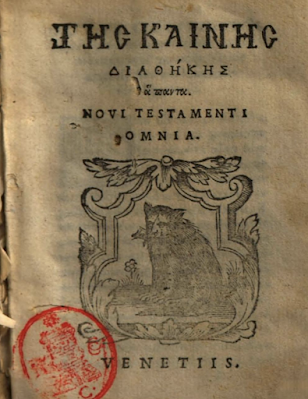In the NA28 text Romans 8.34 begins with τίς ὁ κατακρινῶν;
This is a little bit exciting not only from an exegetical viewpoint; but also because future participles don't come along every day (there are around a dozen in the Greek NT).
If we look in the apparatus it would appear that not a single manuscript can be cited in support of this accentuation (of the future participle κατακρινῶν). The early manuscripts lack accentuation (generally): P46 01 A B* C D* F G 0289 [good luck if you want to check the vid on the basis of the images in NTVMR]; and the only other option given in the apparatus is τίς ὁ κατακρίνων; (rendering this as a present participle). It is presumably on the basis of the predominance of the manuscripts that the THEGNT opts for this reading (cf. also Tisch. 1869/72). Here is a picture from Vaticanus
The exegetical discussions seem to hinge on whether Paul's series of questions are all future.
8.33: τίς ἐγκαλέσει κατὰ ἐκλεκτῶν θεοῦ; ...
8.34: τίς ὁ κατακρινῶν; ...
8.35: τίς ἡμᾶς χωρίσει ἀπὸ τῆς ἀγάπης τοῦ Χριστοῦ; ...
So, very briefly, Cranfield: 'the future is required by the parallel ἐγκαλέσει'.
Or whether you think the immediately preceding present participle is the most significant:
8.33b-34a: θεὸς ὁ δικαιῶν· τίς ὁ κατακρίνων;
So Sanday & Headlam: 'δικαιῶν suggests the present'. I'm tempted to think that the verse numbering has distracted us from the close relationship here.
Does anybody have some wisdom on this? Should I think of the NA28 reading as essentially a conjectural reading? Should I think, on the basis that there is no essential morphological distinction between the two forms, that it doesn't really matter.



